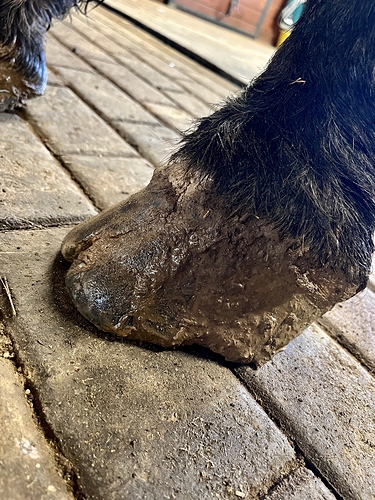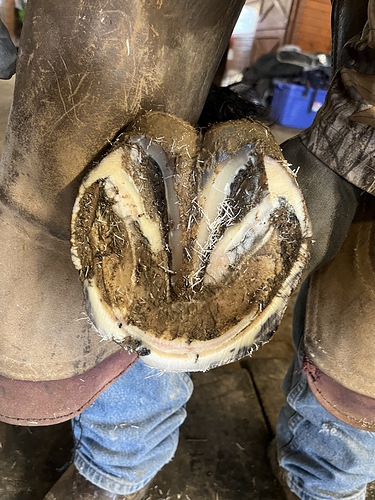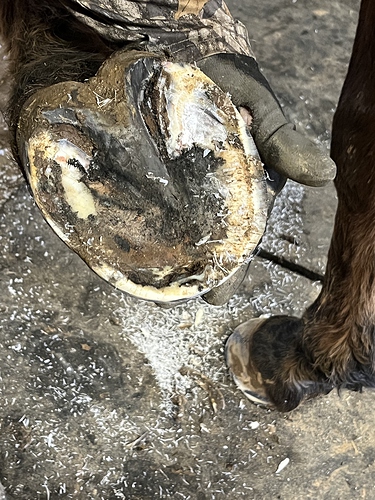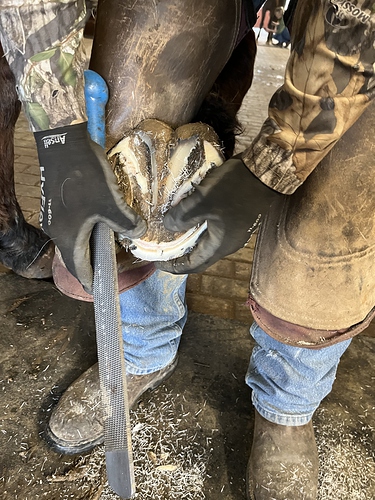You can see my other posts for back story, but I just purchased a horse from a neglect situation. I had to kind of crank up the brightness so you can get a view of the one foot, but all the feet have major abscess tracks, none currently active, and both front feet have the pinkish/purplish lines at the toe. He seems uncomfortable enough on both his front feet that when you pick one or work with it, as soon as you put it down he yanks the other up.
Waiting on blood work for cushings test.
Vet work does show history of suspected tick illness but no diagnostic blood work was done, just treated with antibiotics.
Horse does seem prone to colic.
My farrier and vets both (probably wisely) say to try feeding him and providing him with basic care for a while and see how the feet come along before freaking out, however he’s currently at a vet rehab facility and the level of management I need to expect with the feet is going to somewhat predict where he ends up long term.
My instinct is to call in a podiatrist and get an X-ray on that foot to make sure no foreign body is stuck in there, since the last time the farm owner reported he was struggling with an abscess was November of last year, but I am admittedly extra. I’m just out of my depth on this one.
Would love to hear COTH input.






 ) before you know it, you have a happier foot that doesn’t look nearly so hopeless.
) before you know it, you have a happier foot that doesn’t look nearly so hopeless.